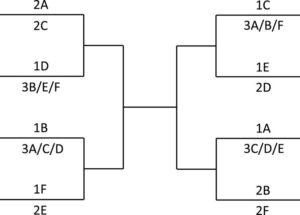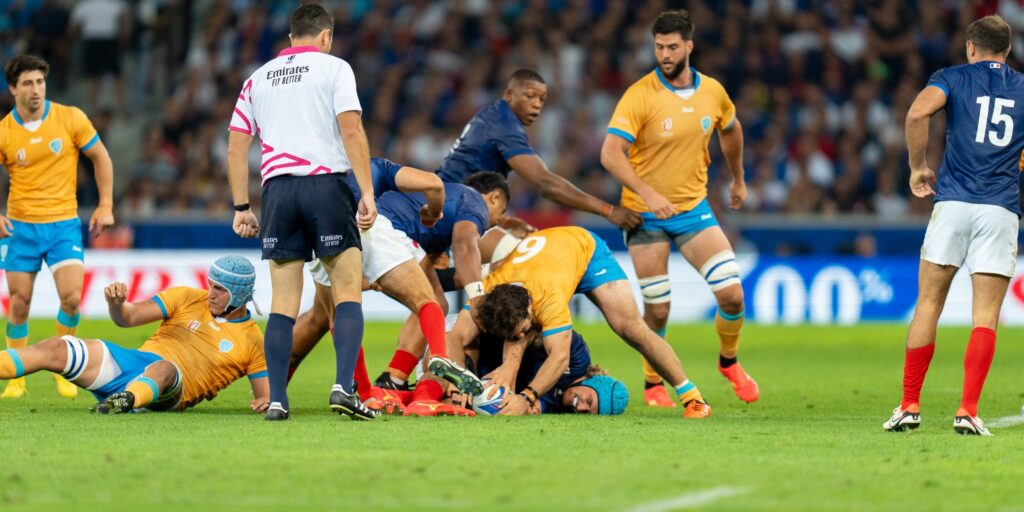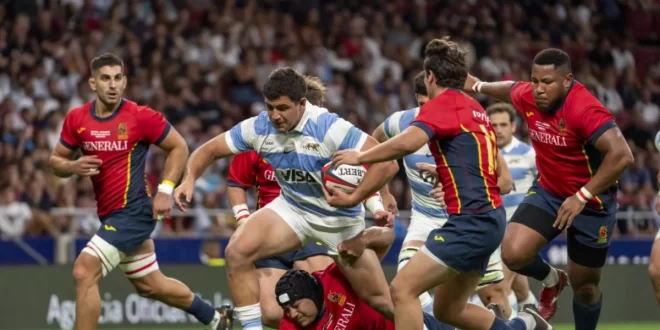Changes are coming to the peak of the sport of rugby. The World Cup will be expanded to 24 teams for 2027. An official announcement will be made before the end of Rugby World Cup 2023.
Writing for The Guardian, Robert Kitson confirmed the expansion. Details of the format are unconfirmed; however, indications are that World Rugby will green-light a 24-team Rugby World Cup. CEO Alan Gilpin called for efforts to expand, declaring that World Rugby wants more teams to be able to qualify for future tournaments.
24 team Rugby World Cup Format
The inaugural Men’s Rugby World Cup in 1987 was a 16 team tournament. The model was changed to 20 teams in 1999 and reconfigured for RWC 2003. The five pools of four model was used from 2003 with 2023 to be the last time. The model of two teams per pool advancing to the Quarter Finals will be altered with a round-of-16 format for 2027.
Four teams per pool will enable matches on the same days for all competitors from each group. This will prevent a repeat of Namibia’s scheduling compared to Italy’s for 2023. It would also mean three rather than four pool matches each. The shortening would drastically decrease the number of non-match days during the group stage.
The symmetrical structure would see the 24 teams divided into six groups of four. Sixteen of the twenty-four competitors would contest knock-out matches in the round-of-16. Group winners will receive favorable matches against group runners-up play or third-placed teams.
What RWC 2027 Could Look Like with 24 teams
The tournament structure for Australia 2027 will mean changes to qualifiers. The Americas will likely see changes again. In all likelihood South America and North America will be split for the initial stages. This will be motivated in large part to ensure that 2031 hosts, the USA, do not miss out.
The USA’s elimination by Portugal combined with Portugal’s performances at the World Cup are two reasons for expansion. Unbalanced draws with four groups are another point of note; Scotland in Pool B was a talking point long before the World Cup began. Also factoring in are Spain’s disqualification and market size. Probable contenders for the four new places have large populations from a comparative perspective.
Sample pools are shown in the table below. The Men’s World Rankings as of October 02, 2023 have been used to distribute the teams. Russia is not listed due to suspension.
| POOL A | POOL B | POOL C | POOL D | POOL E | POOL F |
| Ireland | France | South Africa | New Zealand | Scotland | England |
| Japan | Italy | Australia | Argentina | Fiji | Wales |
| Portugal | Georgia | Samoa | Uruguay | USA | Tonga |
| Chile | Hong Kong | Spain | Canada | Namibia | Romania |
Altered qualifiers would contribute to the above pools. For instance, the USA could be North America 1 and Uruguay South America 1. Chile and Canada could contest Americas 3 with the loser entering repechage. Georgia, Portugal and Spain could qualify as Europe 1, 2 and 3, Samoa and Tonga as Oceania 1 and 2 and Namibia as Africa 1. Canada could thus qualify alongside Romania and Hong Kong as repechage qualifiers.
The sixteen places in the play-off’s could be determined according to a model similar to the following graphic.

Based on positions, if Ireland were to win their group they would be 1A followed, potentially, by Japan as 2A. 1A would face the best of 3 C/D/E. If teams finish in the same order of seedings then this would be one of Samoa, Uruguay or USA.
As Pool A runner-up Japan would have a harder opponent than would Ireland; Japan would face the runner-up of 2C which currently would mean Australia. This match is an indication of how a round-of-16 would add increased meaning to the pools. On the one hand, if Australia lost to South Africa in the pool then Ireland and Springboks would be advantaged. On the other hand, points in the pool stage could be more significant with four spots for third per pool in the final sixteen.
Tier 2 teams would be under pressure to compete well against Tier 1 sides so as to not lose by large margins. The reconfiguration would also mean fixtures between the third and fourth seeds in pools would become loser-goes-home matches within the pool stage. They would be competing both against teams from their own pools and from others for third spots for a chance of reaching the round-of-16.
Under the same pool scenario if England were 1F then this would be a play-off against 2E, potentially Fiji. The winner of England vs Fiji would face the winner of 1B, potentially France in a Quarter Final after 1B had faced one of Portugal, Samoa or Uruguay in the round-of-16. Another round-of-16 match-up could be Scotland against Argentina.
As demonstrated, expanding to 24 teams will decrease the certainty over who faces who. This suggests a rise in interest as it would be harder to predict who faces who. Would France face Portugal, Samoa or Uruguay? Or would an upset mean it is a team listed as 4th in these pools?

 Americas Rugby News Rugby news from across the Americas!
Americas Rugby News Rugby news from across the Americas!




